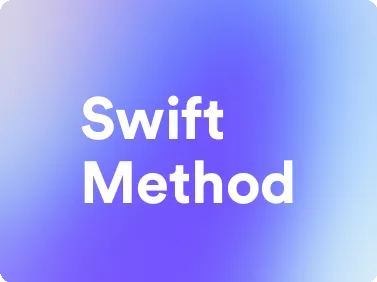The Swift Method: A Productivity Approach for Efficient Work
This guide will walk you through the essential elements of using swift method - the productivity method to keep your team productive and engaged.
Try Lark for Free
Increasing productivity is a common goal in the modern world, and the swift method has gained attention as an effective approach to achieve this. This article aims to explore the swift method in depth, including its origin, target audience, pros and cons, guidance on getting started, actionable tips, do's and don'ts, FAQs, and a conclusion.
What is the Swift Method in the Context of Productivity?
The swift method, also known as the "Stop Wasting Time" method, is a structured approach to managing time and tasks efficiently to increase productivity. It emphasizes quick decision-making, prioritization, and focused execution to achieve optimal results. In practice, the swift method encourages individuals to swiftly assess tasks, allocate appropriate time, and execute with precision.
Exploring the Origin of the Swift Method
The concept of the swift method originated from the intersecting realms of time management, productivity optimization, and cognitive psychology. It draws inspiration from renowned productivity methodologies while integrating unique principles to streamline workflow and enhance efficiency. The evolution of the swift method reflects a response to the increasing demand for rapid and effective task completion in various professional and personal contexts.
Use Lark to unleash your team productivity.
Understanding the Target Audience for the Swift Method
The swift method is designed for individuals across diverse domains seeking to enhance their productivity and time management skills. It caters to professionals, students, entrepreneurs, and anyone aiming to streamline their workflow and capitalize on time resources effectively. The method is adaptable and scalable, making it suitable for individuals at different career stages and with varied responsibilities.
Exploring the Pros and Cons of the Swift Method
Pros:
- Efficiency: The swift method promotes a streamlined approach to task management, enabling individuals to accomplish more in less time.
- Adaptability: Its principles can be applied across different tasks and projects, aligning with various work styles and preferences.
- Decision-making: The method cultivates a decisive mindset, fostering quicker and more effective decision-making.
Cons:
- Risk of Overlooking Details: The emphasis on swift execution may lead to oversight, potentially impacting the quality of outcomes.
- Stress: The fast-paced nature of the method may induce stress for individuals who thrive in a more relaxed work environment.
- Limited Flexibility: In certain scenarios, the rigid adherence to swift execution might hinder creativity and innovation.
Learn more about Lark x Productivity
Strategies for Getting Started with the Swift Method
To embark on your swift method journey, consider the following steps:
- Task Evaluation: Assess your current workload and identify tasks suitable for the swift method approach.
- Time Allocation: Allocate specific time slots for each task, aligning with the principles of swift decision-making and focused execution.
- Mindset Cultivation: Foster a mindset conducive to rapid decision-making and adapt a proactive attitude to streamline workflow.
Use Lark to unleash your team productivity.
Actionable Tips for Effective Implementation of the Swift Method
- Utilize Time Blocking: Implement time blocking techniques to allocate dedicated time slots for specific tasks, enhancing focus and productivity.
- Leverage Technology: Explore productivity tools and applications to streamline task management and optimize time allocation.
- Regular Evaluation: Periodically assess the effectiveness of the swift method in your workflow and make necessary adjustments for continuous improvement.
Do's and Don'ts of the Swift Method
| Do's | Don'ts |
|---|---|
| 1. Prioritize Tasks: Focus on prioritizing tasks based on significance. | 1. Avoid Rushed Decisions: Refrain from hasty decision-making without proper assessment. |
| 2. Embrace Flexibility: Embrace adaptability within the method to accommodate evolving task requirements. | 2. Neglect Reflection: Avoid neglecting reflection and review of completed tasks. |
| 3. Seek Feedback: Encourage feedback on the implementation of the method for continuous refinement. | 3. Overextend Yourself: Avoid overloading your schedule with an excessive number of tasks within limited time frames. |
Conclusion
In conclusion, the swift method offers a structured and systematic approach to enhance productivity and time management. By leveraging its principles, individuals can cultivate efficiency, prioritize effectively, and optimize their workflow. Embracing the adaptability and actionable tips associated with the swift method can empower individuals to achieve more in their professional and personal pursuits.
Use Lark to unleash your team productivity.
